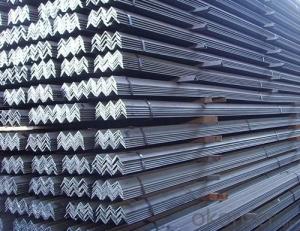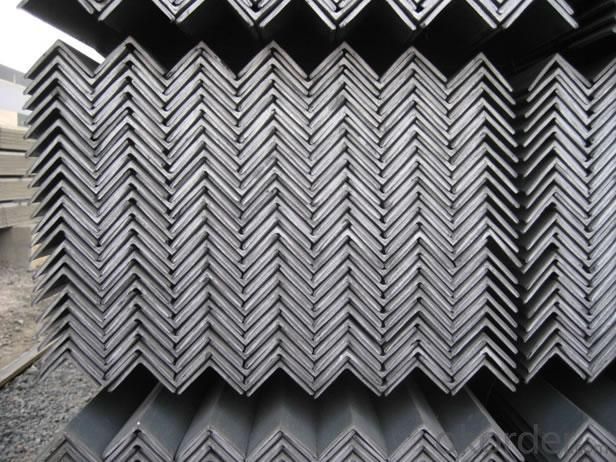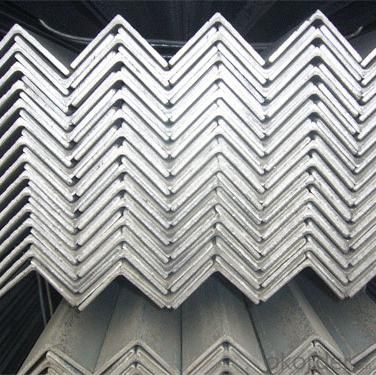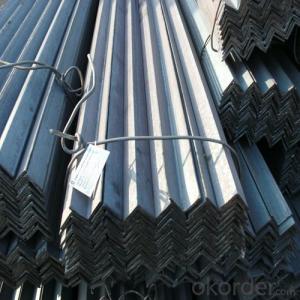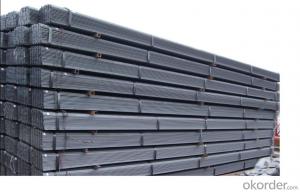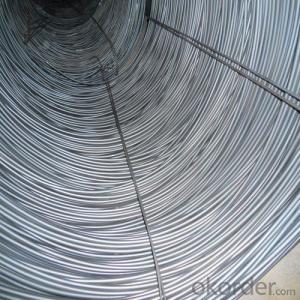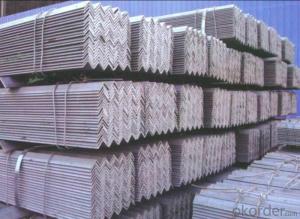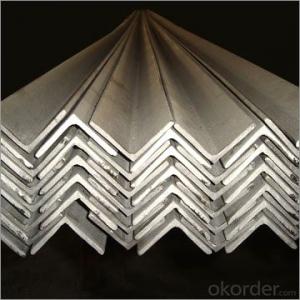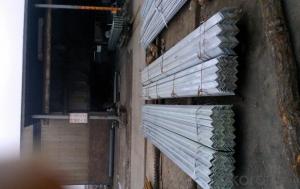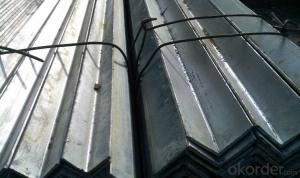EN10025 Equal steel angle for construction
- Loading Port:
- Tianjin
- Payment Terms:
- TT or LC
- Min Order Qty:
- 25 m.t.
- Supply Capability:
- 100000 m.t./month
OKorder Service Pledge
OKorder Financial Service
You Might Also Like
Product Description:
OKorder is offering EN10025 Equal steel angle for construction at great prices with worldwide shipping. Our supplier is a world-class manufacturer of steel, with our products utilized the world over. OKorder annually supplies products to European, North American and Asian markets. We provide quotations within 24 hours of receiving an inquiry and guarantee competitive prices.
Product Applications:
EN10025 Equal steel angle are ideal for structural applications and are widely used in the construction of buildings and bridges, and the manufacturing, petrochemical, and transportation industries.
Product Advantages:
OKorder's Equal steel angle are durable, strong, and resist corrosion.
Main Product Features:
· Premium quality
· Prompt delivery & seaworthy packing (30 days after receiving deposit)
· Corrosion resistance
· Can be recycled and reused
· Mill test certification
· Professional Service
· Competitive pricing
Product Specifications:
Specifications of Equal Angle Steel
1.Standards:GB
2.Length:6m,9m,12m
3.Material:GBQ235,Q345 or Equivalent
Usage & Applications of Equal Anlge Steel
Trusses;
Transmission towers;
Telecommunication towers;
Bracing for general structures;
Stiffeners in structural use.
Packaging & Delivery of Equal Angle Steel
1. Transportation: the goods are delivered by truck from mill to loading port, the maximum quantity can be loaded is around 40MTs by each truck. If the order quantity cannot reach the full truck loaded, the transportation cost per ton will be little higher than full load.
2. With bundles and load in 20 feet/40 feet container, or by bulk cargo, also we could do as customer's request.
3. Marks:
Color mark: There will be color marking on both end of the bundle for the cargo delivered by bulk vessel. That makes it easily to distinguish at the destination port.
Tag mark: There will be tag mark tied up on the bundles. The information usually including supplier logo and name, product name, made in China, shipping marks and other information request by the customer.
If loading by container the marking is not needed, but we will prepare it as customer request.
*If you would like to get our price, please inform us the size, standard/material and quantity. Thank you very much for your attention.
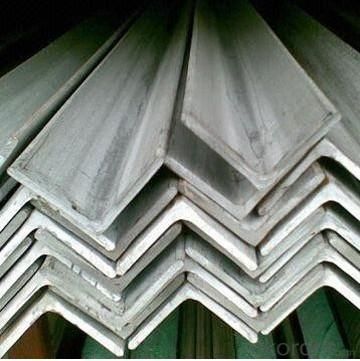
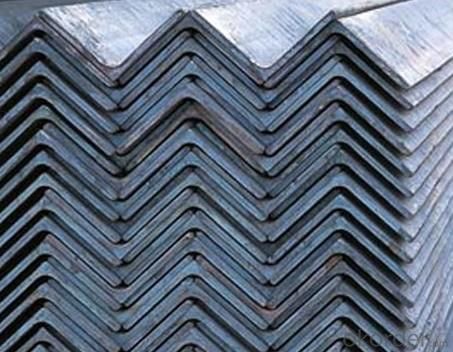
FAQ:
Q1: Why buy Materials & Equipment from OKorder.com?
A1: All products offered byOKorder.com are carefully selected from China's most reliable manufacturing enterprises. Through its ISO certifications, OKorder.com adheres to the highest standards and a commitment to supply chain safety and customer satisfaction.
Q2: What makes stainless steel stainless?
A2: Stainless steel must contain at least 10.5 % chromium. It is this element that reacts with the oxygen in the air to form a complex chrome-oxide surface layer that is invisible but strong enough to prevent further oxygen from "staining" (rusting) the surface. Higher levels of chromium and the addition of other alloying elements such as nickel and molybdenum enhance this surface layer and improve the corrosion resistance of the stainless material.
- Q: Can steel angles be used for signposts and traffic signals?
- Yes, steel angles can be used for signposts and traffic signals as they provide strength and stability required for supporting these structures.
- Q: What are the common bending or forming processes used for steel angles?
- The common bending or forming processes used for steel angles include cold bending, hot bending, roll forming, and press brake forming.
- Q: How do you protect steel angles from chemical exposure?
- To protect steel angles from chemical exposure, various methods can be employed. One effective approach is to apply a protective coating such as enamel or epoxy paint, which acts as a barrier against corrosive chemicals. Additionally, using corrosion-resistant materials such as stainless steel angles or galvanized coatings can enhance their resistance to chemical exposure. Proper storage and handling practices, ensuring minimal contact with corrosive substances, can also contribute to protecting steel angles from chemical damage.
- Q: What are the different connections used with steel angles?
- There are several different connections that can be used with steel angles, including bolted connections, welded connections, and clip connections. Bolted connections involve using bolts and nuts to connect the angles to other structural members. Welded connections involve fusing the angles to the other members using a welding process. Clip connections involve using clips or brackets to secure the angles to the other members. The choice of connection depends on factors such as the load requirements, design specifications, and fabrication capabilities.
- Q: Can steel angles be used in railway track construction?
- Indeed, steel angles find utility in the construction of railway tracks. They serve as a crucial structural element, lending robustness and steadiness to the track system. By bolstering the train's weight and facilitating even load distribution, they play a pivotal role. Steel angles are frequently employed in the fabrication of rail joints, which connect two rail sections, as well as in the installation of rail fastenings and track accessories. Additionally, their durability, resistance to wear, and ability to withstand substantial loads and high impact forces make them an optimal selection for railway track construction.
- Q: Are steel angles recyclable?
- Yes, steel angles are recyclable. Steel is one of the most recycled materials in the world, and steel angles can be easily melted down and reused in the production of new steel products.
- Q: What are the different types of surface finishes available for steel angles?
- There are several different types of surface finishes available for steel angles, each providing unique characteristics and benefits. 1. Mill Finish: This is the most basic and common type of surface finish for steel angles. It is essentially the raw, untreated surface of the steel, which may have some imperfections and roughness. Mill finish is often used for structural applications where aesthetics are not a priority. 2. Hot-Dip Galvanized: This surface finish involves immersing the steel angle in a bath of molten zinc, creating a protective coating that prevents corrosion. Hot-dip galvanized steel angles are highly resistant to rust and can be used in outdoor or corrosive environments. 3. Powder Coated: Powder coating is a process where a dry powder is electrostatically applied to the steel angle and then cured under heat. This creates a durable and attractive finish that provides excellent resistance to chipping, scratching, and fading. Powder coated steel angles are commonly used in architectural and decorative applications. 4. Painted: Steel angles can also be painted with various types of paint, such as epoxy, enamel, or acrylic. Paint provides a protective layer and can enhance the appearance of the steel angle. However, painted surfaces may be more susceptible to chipping and require periodic maintenance. 5. Stainless Steel: Stainless steel angles have a naturally smooth and polished surface due to their composition. They are highly resistant to corrosion and staining, making them suitable for applications in industries such as food processing, pharmaceuticals, and marine environments. 6. Shot Blasting: Shot blasting is a surface treatment process where steel angles are bombarded with small metallic or non-metallic particles at high velocity. This removes any rust, scale, or contaminants from the surface, resulting in a clean and roughened finish. Shot blasting prepares the steel angle for further coating or painting. These are just a few examples of the different types of surface finishes available for steel angles. The choice of finish depends on the specific requirements of the application, including factors such as corrosion resistance, aesthetics, durability, and cost.
- Q: Can steel angles be used in the construction of museums?
- Yes, steel angles can be used in the construction of museums. Steel angles are commonly used as structural components in construction projects, including museums. They provide strength, stability, and versatility, making them suitable for various architectural and design requirements in museum construction.
- Q: What is the maximum deflection allowed for steel angles?
- There are various factors that determine the maximum deflection allowed for steel angles, such as the specific grade of steel, the angle's length, and the applied load. In the field of structural engineering, deflection limits are established in order to ensure the safety and performance of structures. Typically, the deflection limit for steel angles is expressed as a fraction of the span length, denoted as L/240 or L/360, where L represents the unsupported length of the angle. For instance, if the unsupported length of a steel angle measures 240 inches, the allowable maximum deflection would be either 1 inch (240/240) or 0.67 inches (240/360). Nevertheless, it is crucial to acknowledge that these deflection limits may vary depending on the specific design codes and standards employed in a given project. For more precise and specific information regarding the maximum deflection permitted for steel angles in a particular application, it is advisable to consult the relevant code or seek guidance from a structural engineer.
- Q: Can steel angles be used in bridges?
- Yes, steel angles can be used in bridges. Steel angles are often used as structural elements in bridge construction due to their strength, versatility, and ability to provide support and stability. They can be used in various bridge components such as beams, trusses, and connections, helping to distribute loads and resist forces in bridge structures.
Send your message to us
EN10025 Equal steel angle for construction
- Loading Port:
- Tianjin
- Payment Terms:
- TT or LC
- Min Order Qty:
- 25 m.t.
- Supply Capability:
- 100000 m.t./month
OKorder Service Pledge
OKorder Financial Service
Similar products
Hot products
Hot Searches
Related keywords
